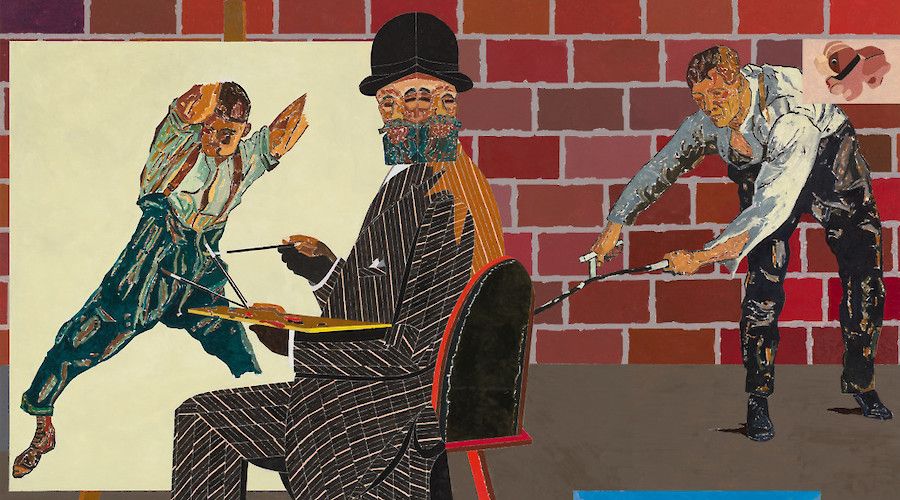Eduardo Arroyo at the Marlborough

This exhibition of Spanish master Eduardo Arroyo features over 70 works, including oil paintings, drawings, watercolors, and sculptures spanning over 50 years of the artist’s career.
Eduardo Arroyo’s work has been shown since 1961 in exhibitions across the globe, including the Neue Gesellschaft für Bildende Kunst, Berlin (1971); The Centre Pompidou, Paris (1982); Solomon R. Guggenheim Museum, NY (1984); Museum für Kunst und Kulturgeschichte, Dortmund, (1987); Institut Valencià d’Art Modern, Valencia (1989); Museo Nacional Centro de Arte Reina Sofía, Madrid (1998) and most recently, held a solo exhibition at Fundación ENAIRE in Santander, Spain (2021-22).
Arroyo’s work can be separated into two different stages marked by the death of Francisco Franco in 1976: during exile (1958-1976), and post exile (1976-1998). In violent opposition to the dictatorship, Arroyo’s work engages with the Spanish political climate, and he strategically positions his work to take an ironic, yet critical stance. In the context of this presentation, it must be noted that major works by Arroyo, though not widely known in the United States, are considered seminal to post-war European art and Narrative Figuration.
Olivier Kaeppelin, former director of the Fondation Maeght, writes about the artist’s idiosyncratic practice: “Eduardo Arroyo, a painter of history, knows that a work of art is –by essence– anti-historical. This is the founding paradox of his work: it allows him to dance with one foot in and one foot out of each realm. He bets on the simultaneous engagement and distance of each subject matter armed with a sense humor and irony that ‘work’ reality by mixing plans lying beyond logical and argumentative geographies. There is no rhetoric in the work of Arroyo, but a constellation of ambivalent propositions where irony is weaponized.”